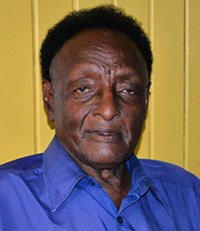
MURDER-accused Linden Mc Intosh was convicted of murder and sentenced to death in 1984 but in 1985 was freed by the Appellate Court through a fatal irregularity.
That Appellate Court was constituted by Chancellor Keith Massiah and Justices of Appeal, Charles Fung-A-Fat and Cecil Kennard.
That accused who had allegedly made a confession statement that was withdrawn by the prosecution and the trial judge, had omitted to rule on the issues raised at the trial on the admissibility of an alleged confession, causing the Appellate Court to find the presence of ‘fatal irregularity’ resulting in the quashing of the indictment and freedom of the accused.
Unhelped from proper directions at the jury trial, the jury had found the accused guilty as charged. Linden was freed on appeal.
According to the facts, the appellant, Linden Mc Intosh was convicted for a murder and sentenced to death. The prosecution’s case against the appellant depended on evidence given by the brother of the deceased.
On appeal, the Court focused on two grounds which in its view merited consideration. These were whether the trial judge misdirected the jury when he told them that the issues of self defence and manslaughter did not arise and whether he erred when he failed to rule on the admissibility of the Appellant’s statement to the police.
Held: (i) There was nothing in the evidence to suggest that the deceased attempted to strike the appellant or that the deceased had had any weapon on him, which would have induced fear in the mind of the Appellant that he was in danger of being struck by the deceased and, which would have required the use of a knife by the accused in order to defend himself. There was also no evidence that the Appellant was provoked to lose his self-control and therefore no issue of provocation to be left to the jury for their determination;
(ii) Counsel for the accused withdrew his objection to the admissibility of the Appellant’s statement to the police and, the issue was whether the trial judge was still under the obligation to rule on it, and if his failure to do so amounted to a fatal irregularity. Notwithstanding that a statement was both voluntary and obtained in accordance with the Judges’ rules, the judge may exclude it in the exercise of his residual discretion to exclude any evidence, if the strict rules of admissibility would operate unfairly against an accused. The situation required a ruling on the part of the learned Judge on the issues raised at the trial and an omission to rule, especially so far as the admissibility of the statement was concerned, was a fatal irregularity.
Appeal allowed and the conviction and sentence set aside. New trial ordered.
Forty-two (42) cases were referred to.
B. C. De Santos for the Appellant .
L. Haynes, S.C, for the State.
Chancellor Massiah : I have had the advantage of reading in draft the opinion just delivered by my learned brother Kennard, J. A., with whose final conclusion I am in complete agreement, but since, in relation to the question of confessional statements I have arrived at that conclusion by a route somewhat different from his, I feel constrained to explain shortly the juristic passage that I pursued.
Ibrahim v. R.[1914-15] All E.R. Rep. 874 makes us familiar with the principle that a confessional statement is only admissible in evidence against the accused if it is proved by the prosecution beyond a reasonable doubt that its contents were voluntarily disclosed.
Although it has become the wont of lawyers to refer to Lord Sumner’s classic formulation of the principles in that case, as if the principle derived its seminal value therefrom, the principle is, as Lord Sumner himself observed at p. 877 “as old as Lord Hale “ and has strong historical roots in the common law heritage. [A paradign of earlier intellectual leadership is to be found in Baron Parke’s ruling in R. v. Warringham [1851] 169 E.R. 575.]
This principle developed as a result of the unfair and barbarous methods employed in early times to wring “confessions” out of innocent persons accused of crime. See the historical survey made by Haynes C. in The State v. Gobin & Griffith, [1976] 23 WIR 256 , at pp. 261-5. And, so it is that in the Commonwealth jurisdictions safeguards have been established to ensure as far as possible that only voluntary confessions are admitted in evidence. I believe that in Scotland some form of confirmatory proof is required even where confessions are duly admitted, and in Canada the issue of admissibility must be decided before any mention at all of a confession statement is made in the hearing of the jury.
It is a well-settled principle that it is the function of the trial judge to determine whether or not the statement is voluntary before he admits it in evidence. If the trial judge is satisfied that the confession was not obtained by any of the means of inducement which the common law prohibits, and as a consequence admits it in evidence, it then becomes the function of the jury to attribute to the statement what weight and probative value they conceive it deserves.
I sincerely hope that the prosecuting Counsel at criminal trials would, in future, bear in mind the words of wisdom of Persaud J. A. and Crane , J. A (as he then was) and ensure that medical terms are properly explained to the jury so that justice would not miscarry.



.jpg)










